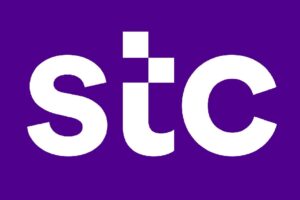There is no question that if leveraged and monetized correctly – 5G is going to act as a global economic driver, infact as per GSMA’s latest report, 5G will bring an economic contribution of $700 billion to the society in 2030. Given that 5G is an enabler of a technology driven digital society and economy and it supports national digital transformation goals by providing reliable, high capacity, low latency, and wide-area connectivity to consumers and industries, it has become very important to support 5G requirements that will further unlock opportunities and will also lay the foundation for advanced 5G deployments of the future. Although, 5G services have been launched in more than 70 countries, boasting 220 5G networks and over 700 million users, one of the biggest challenges faced by service providers is that of spectrum allocation. Considering that the contribution of mobile technologies and associated services is expected to surge to 4.9% of the global GDP by 2024, there needs to be sufficient spectrum resources for IMT/5G in place to provide the capacity for innovation and development of new services. To keep up with the explosion in data driven by today’s data-heavy and tech savvy generation, regulating spectrum for mobility and connectivity has become more important than ever. Therefore, allocation of right amount spectrum in the right bands through licenses assures optimal utilization of the spectrum by operators. It also allows operators to offer innovative services with predictable quality of service. As of now, most of the current investments on 5G networks have been focused on mid-bands (3.3GHz-3.8GHz). However, to keep up with the growing demand for data, supporting advanced Industry 4.0 use cases and to deliver cost efficiency there is growing need for spectrum to be allocated in the 6GHz band. Reserving the spectrum around 6GHz (6425-7125 MHz) is essential to deliver the full potential of 5G-NR and its evolution in the future (i.e., 5.5G and 6G). Allocation and licensing of spectrum in 6GHz band would also enable operators to tackle the challenges of congestion and interference. Sighting the importance of allocations spectrum in the 6GHz band the 3GPP RAN Plenary has rolled out the N104 standardization for U6G (upper 6G, 6425–7125 MHz) as a new IMT licensed frequency band.
Importance of Licensed 6GHz Spectrum Allocation
The use cases delivered by 5G are extremely important from a digital transformation perspective
and considering that 5G has the potential to accelerate world’s GDP, regulators need to ensure that the right steps are taken to support the future development of 5G which will unlock economic growth opportunities As we all known, some Arab countries haven’t allocated 5G TDD spectrum. Would we better replace by 2 GHz per country? In the absence of mid-band spectrum, service providers will have to invest in costly, non-economic infrastructure to densify their 5G networks to provide the necessary capacity and coverage promised by 5G. This in-turn will make 5G services more expensive for the consumers and businesses. Estimating the growing spectrum needs in the 2025-2030 timeframe, the 6GHz is one of the optimal bands in medium frequency to provide seamless wide-area coverage and high-capacity connections. The 6Ghz mid-band provides the perfect balance between coverage and capacity and provides the ideal environment for 5G connectivity. It enables services providers to offer more bandwidth and improve network performance. Additionally, the wide, contiguous channels offered by this range reduces the need for network densifications thereby making next-gen connectivity more cost-effective and affordable for everyone. To sustain healthy IMT development, the 6GHz range is an ideal solution to address the spectrum challenge in ensuring optimal future 5G connectivity and thus the 6425-7125 MHz is a priority band for mobile network operators globally as they look to increase capacity and lower deployment costs.
Since harmonization of 6GHz spectrum will provide more bandwidth and improve network performance, hence licensed 6Ghz band is also seen as the potential candidate to emerge as the next C-band. The C-band which is now the most popular 5G band in world, is known for its characteristics of capacity, coverage and security and sits between the 2.4GHz and 5GHz bands. For commercial success and future deployments of 5G-NR and 5G-Advanced, the 6GHz band can provide the additional 1-2 GHz of mid-band spectrum that would be required to meet the IMT-2020 user experienced data rates of 100 Mbit/s on the downlink and 50 Mbit/s on the uplink in cities with a high density of population. The 6Ghz band that brings with additional spectrum also enables MNOs to optimize their investments made on existing network infrastructure, 6GHz can Re-use existing C-Band macro-cell grid to provide high capacity citywide as well as urban and suburban coverage, thereby reducing cost per bit and simultaneously addressing the connectivity needs of both densely populated cities and remote areas with lesser population. Given the data and spectrum requirements in the 2025-2030 timeframe the 5925-7125 MHz range has the potential to address the expected need for more mid-bands spectrum. Depending on the maturity and the installed base of network infrastructure, regulators in each country could take a different approach. For example, countries that have a well-developed fiber, cable, or DSL broadband access network could make the 6425-7125 MHz band available for 5G to deliver the IMT-2020 requirements. Whereas countries that rely heavily on wireless for connectivity, could use of the entire 5925-7125 MHz for 5G and its evolution.
The future development of 5G to 5G-Advanced is dependent on 6GHz which is a valuable resource. Countries need to make sure that the potential of 5G is not hampered in any way, as this could act as barrier in digitization of society and could push a country backwards, thereby increasing the gap with other economies. Thus, harmonization of the 6GHz spectrum for IMT is imperative for socio-economic growth. Currently, the global spectrum demand and consensus on 6GHz has been formed, and WRC-23 will be the key path to promote this consensus.
What Initiatives Have Been Taken So Far
Global operators including BT, Vodafone, Deutsche Telekom, Orange, Telefonica, and Telia Company, together with leading global suppliers including Ericsson, Huawei, Nokia, and GSMA Intelligence, jointly hosted 6GHz 5G/IMT Spectrum Forum to discuss the future use of the 6 GHz band, during Mobile World Congress held in Barcelona this year. The meeting called for the industry to recognize the importance of 6 GHz as 5G/IMT Spectrum to the mobile industry, promote the use of 6 GHz as WRC-23 approaches. Key contributions were made from important policymakers and regulatory bodies from Finland, France, Kenya, Tunisia, and the UAE.
Some countries have already taken a head start to leverage the 6GHz spectrum. Leading by example is one UAE’s largest operator Etisalat by e&, who announced the successful completion of its first trial of the 6GHz spectrum, creating history by taking this monumental step for the future of 5G, opening a world of possibilities for next-generation technologies and economies of the future. Countries like China intends to use the entire 1200 MHz in the 6GHz band for 5G NR; Europe is considering using the upper part for 5G NR with the 500 MHz in the lower part of the 6 GHz band already harmonized for unlicensed use (i.e., Wi-Fi 6E/NR-U); Whereas, UAE and Morocco allocated limited unlicensed use to the lower 500 MHz of the band. Whether need mention Saudi Arabia? If we are going to soft KSA position, I think it is not good to speak publicly.
Allocation of 6Ghz spectrum will unlock the potential of 5G to bring to life innovative use cases and applications that require faster and more reliable mobile broadband for consumers and business. 5G enabled services like Fixed Wireless Access, Next-Generation Industrial Automation that will be delivered leveraging 6Ghz spectrum will increase process efficiency, reduce cost, and improve safety. In verticals like healthcare and transport, speed, and latency capabilities of 5G will make advanced telemedicine with remote surgery a possibility, while connected transport will be enabled along with highly efficient public transport networks.
Mobile networks have the potential to create tremendous economic and social value – more than any other wireless technology and thus the mobile industry’s need for more spectrum reserve is justifiable. To deliver the desired speeds and capabilities of 5G, mid-band spectrum is crucial as it can secure performance in the long term and add more capacity if required. Allocation of the 6GHz spectrum is the ideal solution to ensure continuous support for 5G development. Hence regulators are being urged to ensure the upper band (6425 to 7125 MHz) is available for public mobile networks. The development of 6GHz IMT ecosystem and making it commercially available is important and this can only be achieved through global collaboration and unified approach by all eco-system players.
The importance of 6GHz spectrum allocation for 5G








